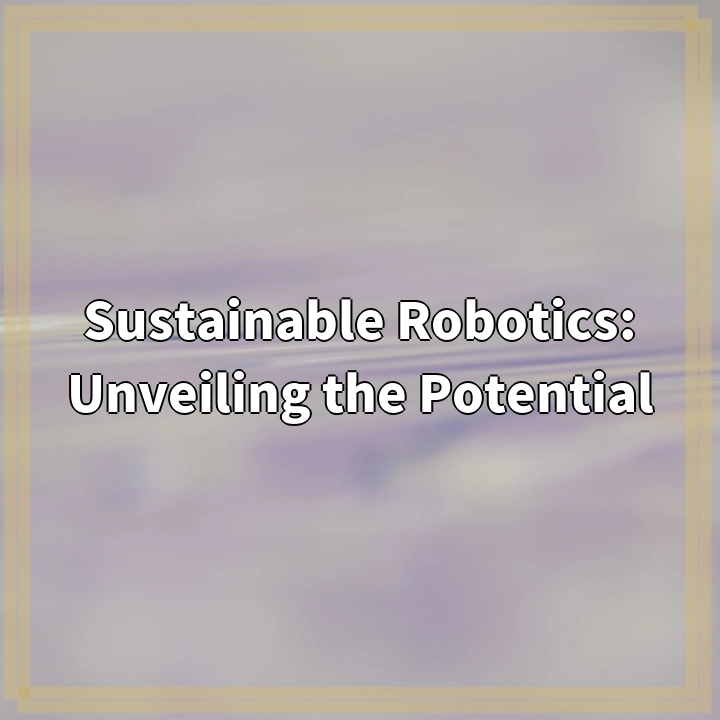
What is Clean Technology?
Clean technology refers to the application of innovative solutions and practices that aim to minimize the environmental impact of human activities and promote sustainable development. It encompasses a wide range of technologies, processes, and products that help reduce pollution, conserve resources, and mitigate climate change.
Real-World Problems Associated with Clean Technology
1. Cost and Affordability
One of the major challenges of implementing clean technology is the upfront cost associated with transitioning from traditional, less sustainable practices. Updating infrastructure, investing in renewable energy systems, and adopting eco-friendly technologies can be expensive, making it difficult for businesses and communities to make the switch.
2. Scalability and Integration
Scaling up clean technology solutions to meet the demands of a growing population poses a significant challenge. Integrating new technologies into existing systems and industries while maintaining efficiency and effectiveness requires careful planning and coordination.
3. Regulatory Hurdles
The implementation of clean technology often faces regulatory hurdles and inconsistent policies. Unclear regulations, lack of incentives, and policy variations across regions can hinder the adoption of clean technologies. Establishing supportive policies and regulatory frameworks is crucial for encouraging widespread implementation.
4. Education and Awareness
A lack of awareness and understanding about clean technology, both among businesses and the general public, can hinder its adoption. Educating individuals and communities about the benefits and potential of clean technology is essential in driving widespread acceptance and implementation.
5. Limited Infrastructure and Resources
In some regions, limited infrastructure and resources can pose challenges for the implementation of clean technology. This can include limited access to renewable energy sources, inadequate waste management systems, and insufficient technological capabilities.
6. Technological Advances and Innovation
The development and deployment of clean technology rely on continuous technological advancements and innovation. Research and development efforts need to continually push the boundaries of sustainability to create more efficient, cost-effective, and environmentally friendly solutions.
7. Social and Cultural Shift
Bringing about a societal shift towards embracing and accepting clean technology requires changing attitudes, behaviors, and cultural norms. Overcoming resistance to change and promoting the understanding that clean technology is not just an option but a necessity is a significant challenge.

Solutions for Clean Technology Challenges
1. Financial Support and Incentives
To address the cost and affordability challenge, governments and organizations can provide financial support, grants, and tax incentives to encourage the adoption of clean technology. This can help offset initial investment costs and make sustainable practices more accessible to businesses and communities.
2. Collaborative Partnerships and Knowledge Sharing
To overcome scalability and integration challenges, stakeholders can establish collaborative partnerships and share knowledge and best practices. This can facilitate the exchange of expertise and resources, enabling the successful implementation of clean technologies on a larger scale.
3. Policy Reform and Standardization
Addressing regulatory hurdles requires the establishment of supportive policies and standards. Policymakers should work towards creating clear regulations, streamlining approval processes, and providing consistent incentives to encourage the widespread adoption of clean technologies.
4. Education and Awareness Campaigns
To combat the lack of awareness and understanding, educational initiatives and awareness campaigns can be conducted. These efforts should target both businesses and the general public, highlighting the benefits and importance of clean technology in tackling environmental challenges.
5. Infrastructure Development
To overcome infrastructure limitations, investments should be made in developing renewable energy infrastructure, waste management systems, and technological capabilities. Governments and relevant organizations should prioritize the development of the necessary infrastructure to support the widespread implementation of clean technology.
6. Research and Development
Continued investment in research and development is essential to drive technological advancements and innovation in clean technology. This can lead to the discovery of more efficient and cost-effective solutions, making clean technology more accessible and feasible for adoption.
7. Behavior Change Initiatives
Efforts to promote a social and cultural shift towards clean technology should focus on behavior change initiatives. These may include awareness campaigns, incentives for sustainable practices, and education programs that foster a sense of responsibility towards the environment.















